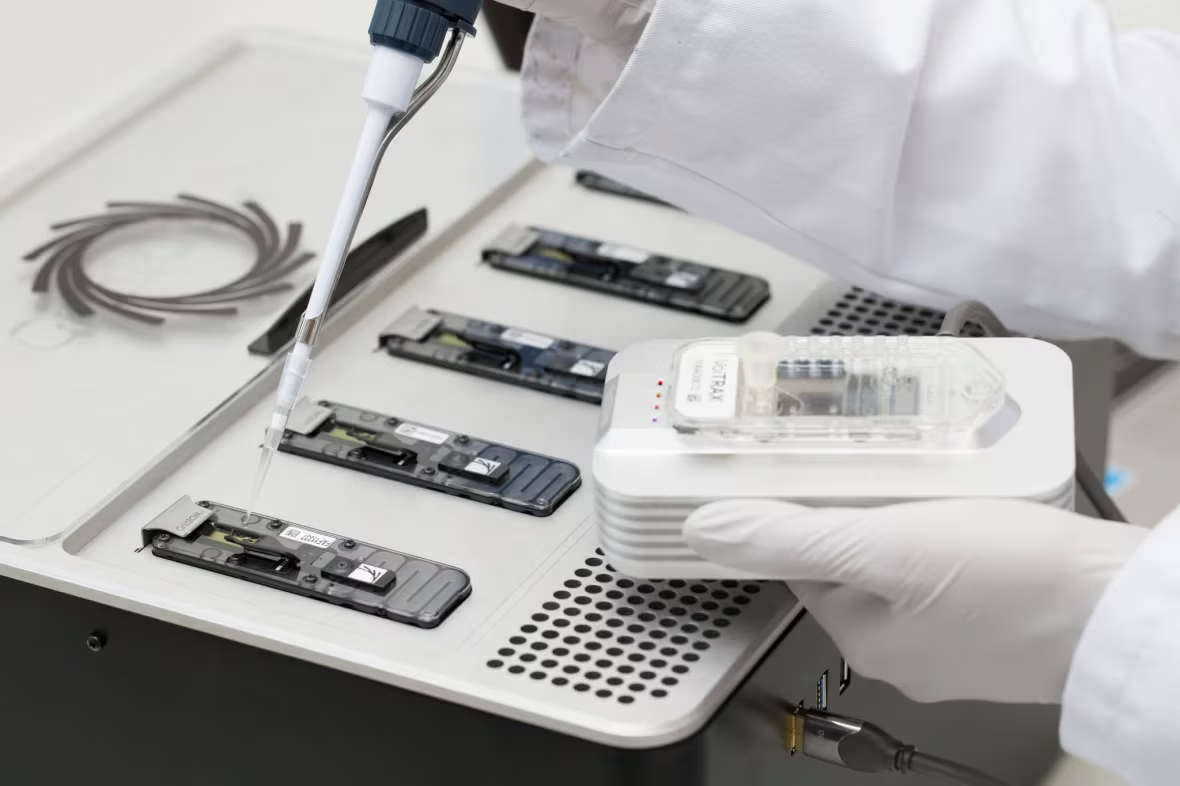How Canadian scientists are turning to the Arctic in the hope of finding life on Mars
McGill researchers successfully test DNA sequencing machine they hope to integrate into a lander
It's cold and dry and it's a perfect testing ground to look for life on a planet more than 200 million kilometres away. Welcome to the Canadian Arctic.
In the search for life outside Earth, there are three prime targets: Mars; Europa, an icy moon of Jupiter; and Enceladus, another icy moon that can be found orbiting Saturn.
Any life on these worlds will likely lie beneath the surface, in ice. And the Arctic has a lot of that.
So Canadian researchers are hoping to build a DNA sequencing machine that could test for life in these cold worlds — one that would be compact, lightweight and completely automated.
And, of course, it would have to survive the cold.

Scientists from Montreal's McGill University travelled to Axel Heiberg Island in Nunavut, where the school has an Arctic research station. There, as they note in their study that appeared in Frontiers of Microbiology, they successfully used existing technology to search for life in some of the most remote and seemingly inhospitable environments.
It's this technology they believe could be packaged into something small and cost-effective that can be sent aboard a lander or rover to search for life on icy worlds.
Lyle Whyte, a professor of natural resource sciences at McGill, told CBC News that the area surrounding the research station contains four or five special types of environments that could be similar to those on Mars, Europa or Enceladus, including permafrost and cold, salty springs.
Recently, there has been some speculation that streaks seen on Mars could contain flowing salty water that may be similar to what's found in those springs (though some suggest that it's not water at all but sand).
And both Europa and Encelaus have icy crusts, with what is believed to be ocean beneath.
- Erosion on Mars reveals ice, moves boulders
- Will astronomers ever be able to confirm life exists on other planets?
While we've developed rovers and landers for that have explored Mars and comets and found evidence for the ingredients of life, called biosignatures, there hasn't been technology to test for nucleic acids, found in life.
This is where the DNA sequencing machine comes in.
In the Arctic, Whyte and fellow researchers used an Oxford Nanopore MinION, which is about half the size of an iPhone and has already been used on the International Space Station. They hope to adapt it, with help from engineering research by scientists at Carleton University in Ottawa, to give it a drill that would bore into the ice and an arm that could collect samples. The arm would return the samples to the instrument, which would then sequence any biomarkers to determine if there indeed is microbial life.

"If there were micro-organisms there, you'd be able to extract the nucleic acids, put them in this little machine, sequence them, and you have detected life," said Whyte said. "An unambiguous biosignature detection."
The next steps
Next? Packaging it into something easily transportable.
Alex Ellery, an associate professor at Carleton's aerospace engineering program, is helping to develop those next stages: the drill and the arm.
"My job is to somehow get the sample into the machine in a way that's going to preserve the integrity of the sample and enable us to extract the DNA and biomolecules and then pass them into the actual device themselves," Ellery, who was not part of the McGill study, told CBC News.

The drill is the easiest part.
"That's probably got the fewest question marks," he said. "It's what happens in between that's the biggest question mark.... It's a fairly complex procedure."
But he's confident it can be done.
"We're engineers. Our job is to solve problems," he said. "This is a problem we've been presented, so we'll solve it."
The researchers will once again head to the Arctic in the coming year to continue testing the components together, Ellery said.
Whyte believes they can develop something within three to five years. However long it takes, he said, this type of technology is the way of the future.
"I would envision that, regardless, this type of sequencing technology will be part of future space missions," Whyte said.
"When we actually do step foot on Mars, we will be carrying an instrument like this."

